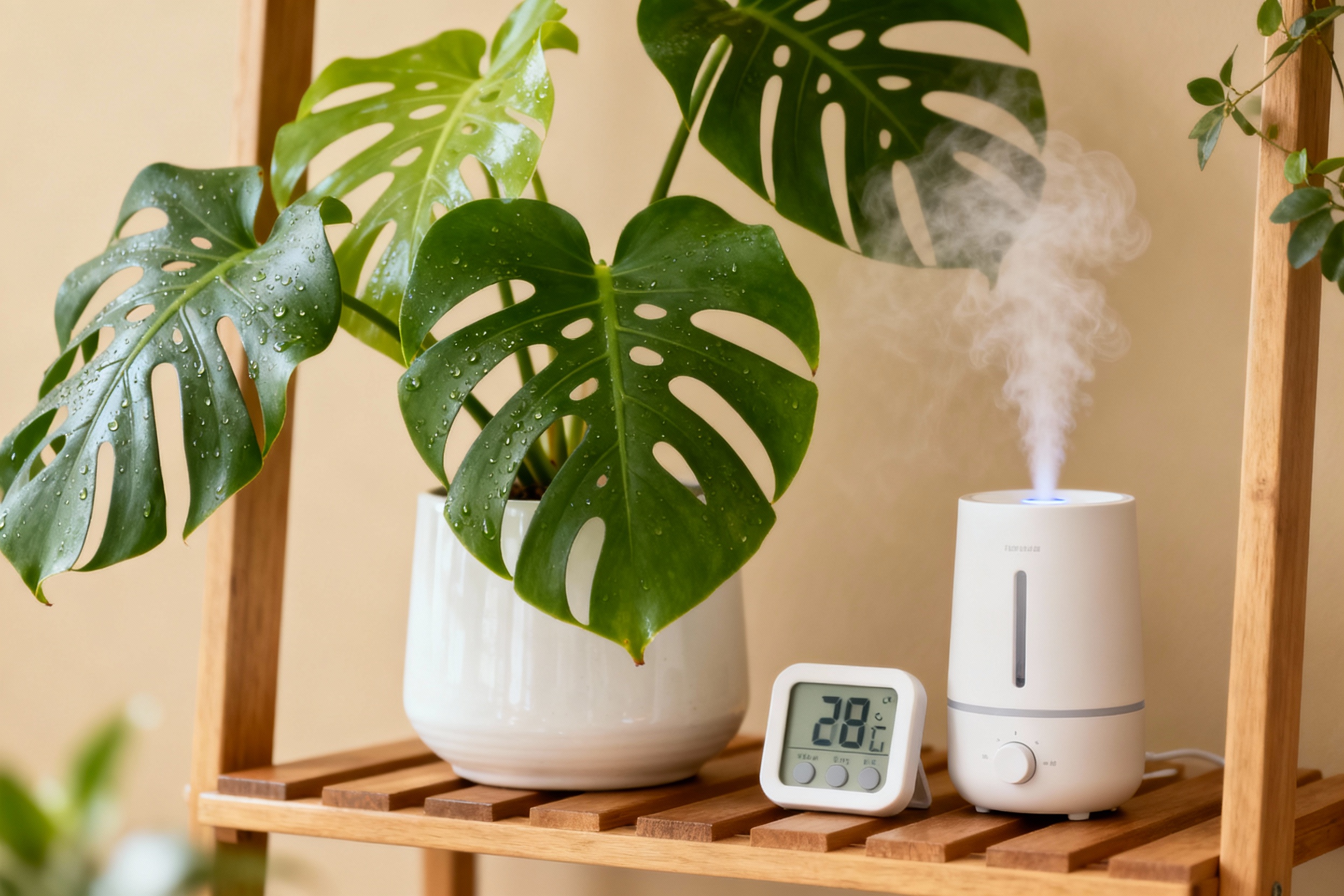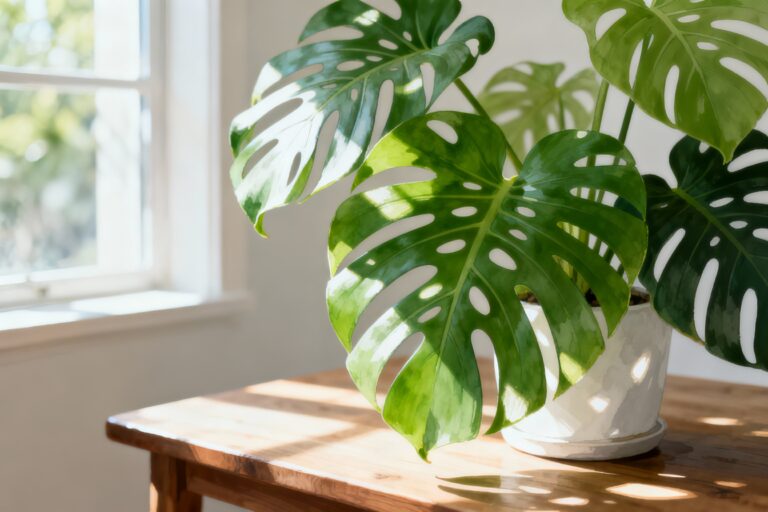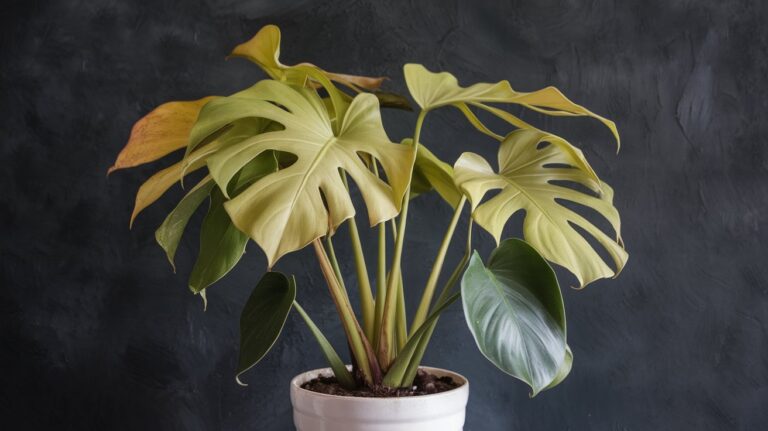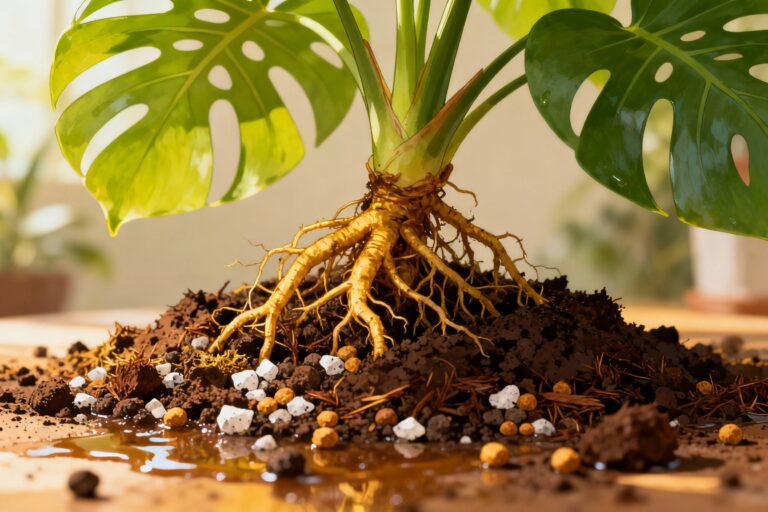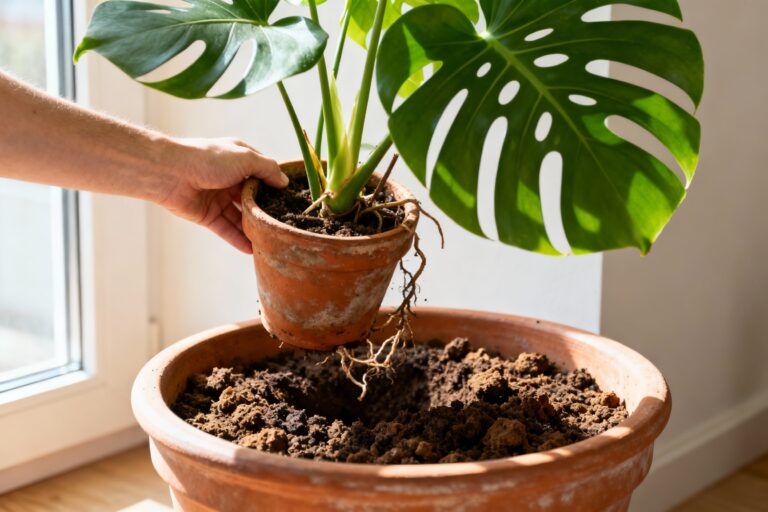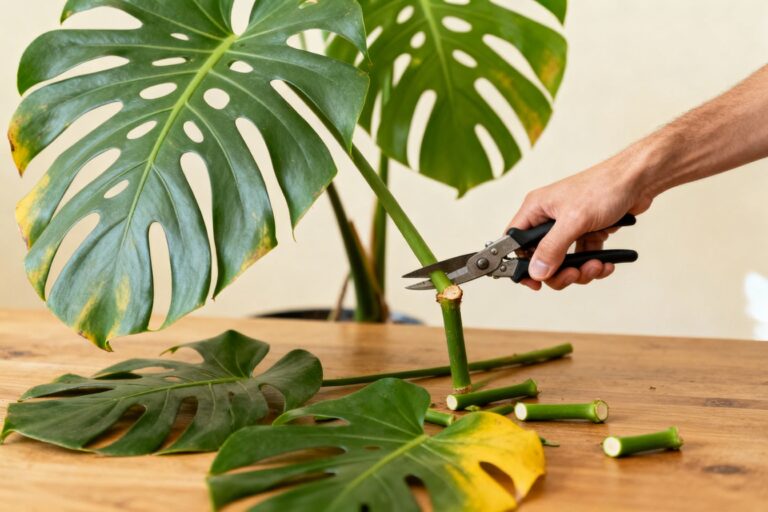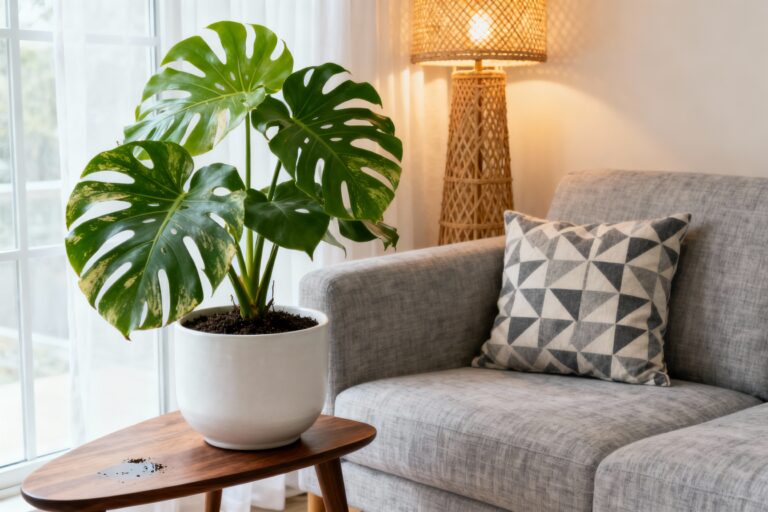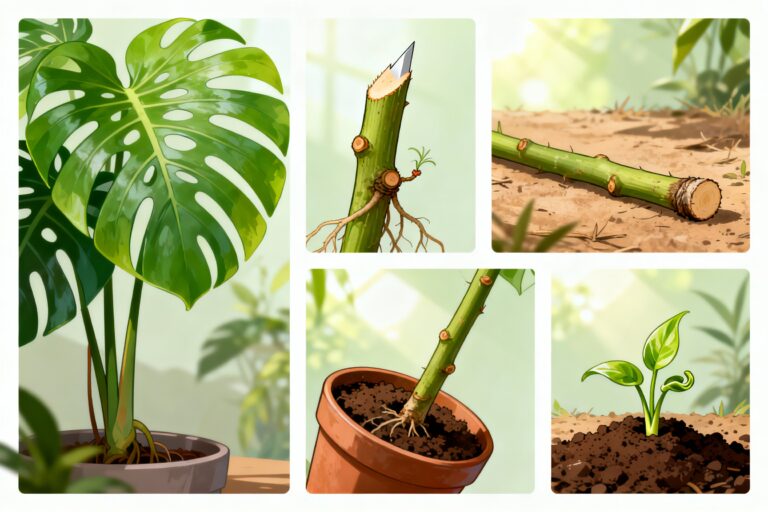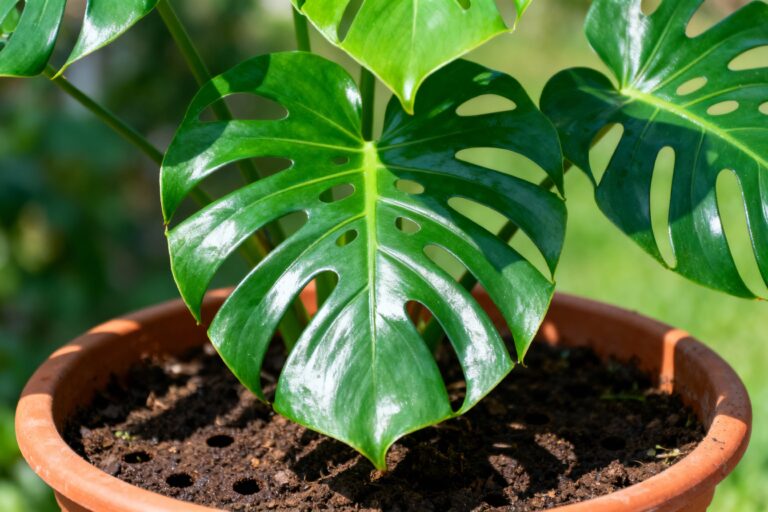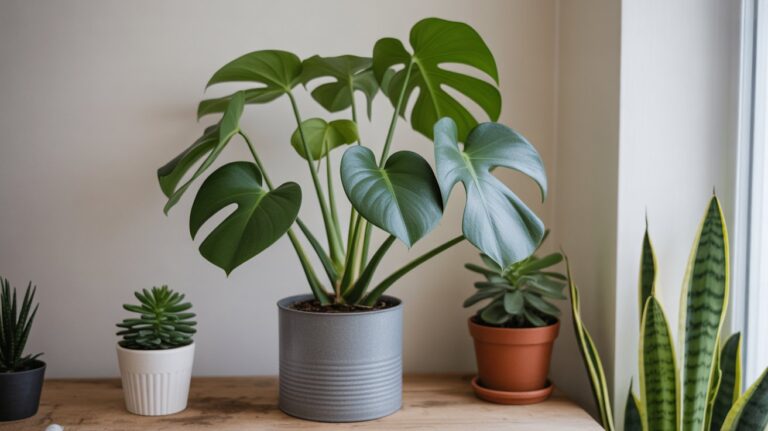Your Monstera doesn’t want to be “just a houseplant.” It wants to be the main character. Those dramatic leaves, those stylish splits—yes, it’s giving rainforest royalty. The good news?
You can absolutely keep it happy indoors without building a tropical spa in your living room. Let’s talk humidity, temperature, and all the little tweaks that keep your Monstera thriving, not simply surviving.
Understand Your Monstera’s Vibe
Monsteras (especially Monstera deliciosa) come from warm, humid forests where they climb trees and sip dappled light. So indoors, you want to mimic that vibe: bright but not harsh, warm but not sweaty, humid but not swampy.
Sounds fussy? It’s not—once you get the basics down, this plant practically sends you thank-you leaves.
- Light: Bright, indirect light is the sweet spot.
- Humidity: Aim for moderate to high (more on that in a sec).
- Temperature: Keep it warm and stable.
- Water: Let it dry out a bit between drinks.
Humidity: How Moist Is Too Moist?
Monsteras enjoy humidity between 50–65%. They won’t cry if it dips to 40%, but they’ll pout—think brown crispy edges and slower growth.
Push above 70% constantly, and you risk fungus parties no one wants to host.
Easy Ways to Boost Humidity
- Humidifier: The MVP. Set it and forget it.
- Pebble tray: Put a tray of pebbles and water under the pot. Evaporation adds a gentle bump.
- Group plants: Plants release moisture.
A little jungle cluster helps.
- Bathroom placement: If it’s bright. Steam chic is in.
What Not to Do
- Don’t mist constantly: It raises humidity for five minutes and can invite leaf spots, especially in low airflow.
- Don’t trap it in stale air: Use a fan on low nearby for circulation.
Temperature: Keep It Cozy, Not Toasty
Monsteras like 65–80°F (18–27°C). They tolerate a short dip to 60°F (15°C), but below that they sulk.
Drafts? Hard no. Heaters blasting on leaves?
Also no.
Placement Tips
- Keep it away from AC vents and radiators.
- Avoid cold windows in winter. Glass gets chilly, leaves get cranky.
- Nighttime drops of a couple degrees? Fine.
Huge swings? Not fine.
Light: Bright, Indirect, and Flattering
Monsteras crave light but not sunburn. Think: near an east window or a few feet back from a south or west window.
If the sun hits the leaves directly for hours, you’ll see yellow patches or crispy edges. IMO, sheer curtains are the unsung heroes here.
Signs You Need to Adjust
- Too little light: Leggy stems, small new leaves, fewer splits.
- Too much light: Bleached or scorched patches.
Watering: The “Not Too Much, Not Too Little” Saga
Water when the top 2–3 inches of soil feel dry. That’s usually every 7–10 days in warm months, every 10–14 days in winter.
Let water run through the pot, then dump the saucer. If you treat your Monstera like a swamp plant, it will protest with root rot. FYI, Monsteras prefer a slightly dry pause between drinks.
How to Read the Leaves
- Drooping + dry soil: Thirsty.
Water now.
- Drooping + wet soil: Overwatered. Let it dry, check drainage.
- Yellow lower leaves: Often overwatering or poor drainage.
Soil, Pots, and Support: Set the Stage
Your Monstera wants a chunky, airy mix. Standard potting soil alone compacts too much and suffocates roots.
Give it structure to climb, and you’ll get bigger, fancier leaves—like it’s showing off, because it is.
The Ideal Mix
- Base: High-quality indoor potting mix
- Chunk: Add orchid bark and perlite (or pumice)
- Extras: A little coco coir for water retention, and some worm castings for nutrients
Pot Choice
- Drainage holes are non-negotiable.
- Size up 1–2 inches only when roots circle the bottom or poke out.
- Terracotta breathes; plastic holds moisture longer. Choose based on your watering habits.
Give It a Climbing Buddy
- Moss pole or coir pole: Tie stems gently as they grow.
- Result: Larger leaves, more fenestrations, stronger plant. It’s glow-up science.
Feeding and Pruning: Keep It Cute
Feed during spring and summer only.
Use a balanced liquid fertilizer at half strength every 4–6 weeks. Skip winter; the plant naps. Trim leggy vines, remove yellow leaves, and don’t feel bad—pruning encourages bushier growth.
Propagation (Because One Monstera Is Never Enough)
- Cut below a node (that knobby bit).
No node, no roots, no plant—sorry!
- Root in water or damp perlite/soil. Change water weekly if water rooting.
- Pot up once roots are a few inches long and branching.
Humidity + Temperature Troubleshooting
Sometimes your Monstera throws shade. Decode the drama and fix the vibes.
- Brown, crispy edges: Low humidity or too much direct sun.
Add a humidifier or move it back from the window.
- Black mushy spots: Overwatering + cold. Warm the room slightly and improve drainage.
- No splits in new leaves: Not enough light or maturity. Boost brightness and give it time.
- Slow growth in winter: Normal.
Reduce watering and stop fertilizing.
Common Pests and Problems (Because Of Course)
If indoor plants have haters, they’re called spider mites, thrips, and mealybugs. Check leaf undersides and stems regularly.
Quick Pest Plan
- Shower rinse: Gently wash leaves to knock off pests.
- Neem or insecticidal soap: Apply weekly for 2–3 weeks.
- Isolate the plant: Don’t let the rest of your crew catch it.
- Increase humidity + airflow: Mites hate humidity; fungus hates still air. Balance wisely.
FAQ
Do I need a humidifier for my Monstera?
You don’t need one, but a humidifier makes your life easier.
If your home sits under 40% humidity, your Monstera will look happier with one. Pebble trays and grouping help, but a humidifier gives consistent results, IMO.
What’s the best temperature range?
Aim for 65–80°F (18–27°C). Avoid cold drafts and sudden swings.
If you feel comfortable in a light sweater, your Monstera probably feels fine too.
Can Monsteras handle direct sunlight?
A little gentle morning sun, sure. Long hours of harsh afternoon sun? Hard pass.
You’ll see scorched patches fast. Filter light with sheers or move it a few feet back.
How often should I water?
Check the top 2–3 inches of soil. If it’s dry, water thoroughly.
Frequency changes by season, pot type, and light. Don’t stick to a strict schedule—use your finger and your common sense.
Why aren’t my leaves splitting?
Fenestrations need maturity, bright indirect light, and something to climb. Give it a support pole, bump the light, and be patient.
Young plants look heart-shaped at first—adorable, but not split.
Should I mist my Monstera?
Occasional misting won’t hurt, but it won’t fix low humidity long-term. Misting can also spot leaves if airflow stinks. If you love misting, do it for fun, not as a humidity strategy, FYI.
Conclusion
Give your Monstera bright indirect light, warm stable temps, and humidity in the 50–65% range, and it’ll reward you with glossy, split leaves that scream “I’m thriving.” Water when the top few inches dry, use a chunky soil mix, and let it climb.
Keep it simple, pay attention, and your Monstera will happily act like the leafy diva it was born to be. IMO, that’s a fair trade for the jungle vibes it brings to your space.
